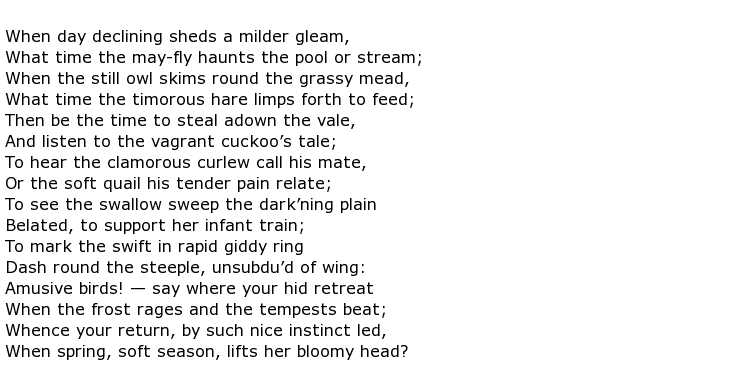 Gilbert White was an 18th century occasional poet and country parson who was best known for his pioneering work in the study and appreciation of the natural world. His work earned him the title Fellow of the Royal Society and he produced the much acclaimed study of his home village in Hampshire called
Gilbert White was an 18th century occasional poet and country parson who was best known for his pioneering work in the study and appreciation of the natural world. His work earned him the title Fellow of the Royal Society and he produced the much acclaimed study of his home village in Hampshire called

It is generally accepted that he was the first English man to write about the flora and fauna to such a detailed degree.
He was born on the 18th July 1720 in Selborne and he went to school locally before receiving private tuition in Basingstoke. From here he went up to Oriel College, Oxford and, with ambitions to become a clergyman, he took deacon’s orders in 1746 and was ordained three years later. He served his home parish of Selborne a number of times along with other locations in the counties of Hampshire and Wiltshire. His highest achievement in this line would probably be when he was made Dean of his old college at Oxford.
When he returned to settle down at the family home in Selborne, following his father’s death, he set about his naturalist studies in earnest. He became fascinated by the little, seemingly insignificant, creatures of the world which, nevertheless, had an important role. For example, he said of the humble earthworm:

With like-minded colleagues, White would keep meticulous records of the comings and goings of birds and animals, observing their hibernation or migratory patterns, along with the natural life-cycles of plants. His journals were legendary and he soon became an expert on the science of phenology. Some of his observations were committed to verse, a good example being his poem

In this he recounted in great detail the joys to be had from taking a simple walk in a wood or along a river bank but using his keen naturalist’s eye to see things that others may not notice. Here are the opening lines of the poem:

It is clear that his obsession with the minutiae of the natural world were a way of life to him and his findings were of great value to the scientific world in general. For example, when an Icelandic volcano sent its toxic ash across the waters, severely affecting much of Europe, his journals of 1783 and 1784 became reference works for climatologists to study this problem.
White’s literary output took the form of poetry and letters written to zoologists and other Fellows of the Royal Society, the latter forming much of the content of his “Selborne” book mentioned above. It was incredibly popular at the time of publication and remains so to this day with so many re-issues that some say it is not far behind the works of Shakespeare and The Bible in the number of copies produced. His style of writing was remarkable with his biographer remarking that:

White’s legacy is considerable with his former home, The Wakes, now designated as the Gilbert White Museum. His impact on the natural world is such that over two hundred years later he is an authority on all things that live or grow.
Gilbert White died on the 26th June at the age of 72.

